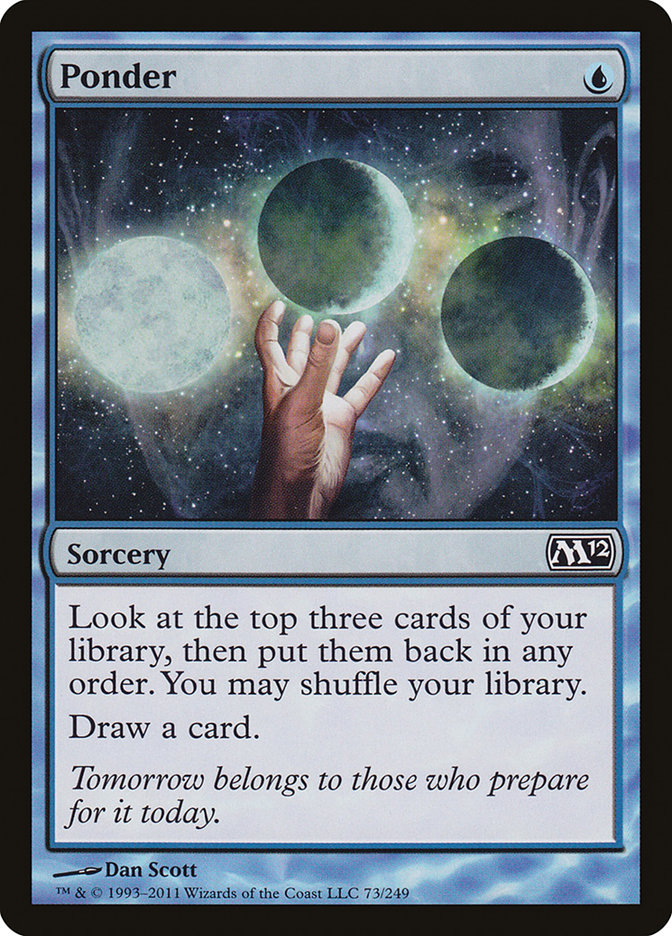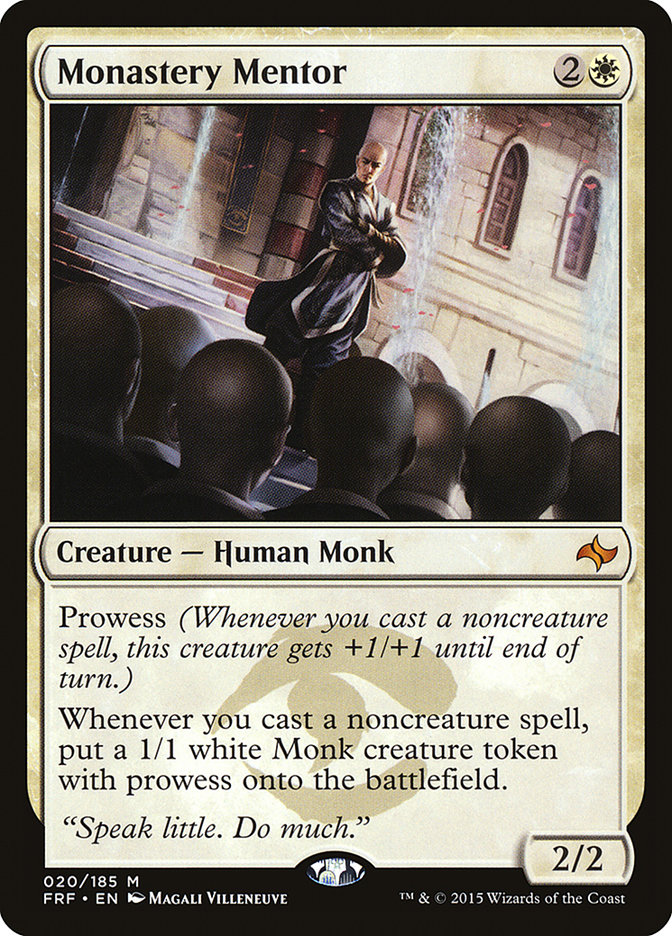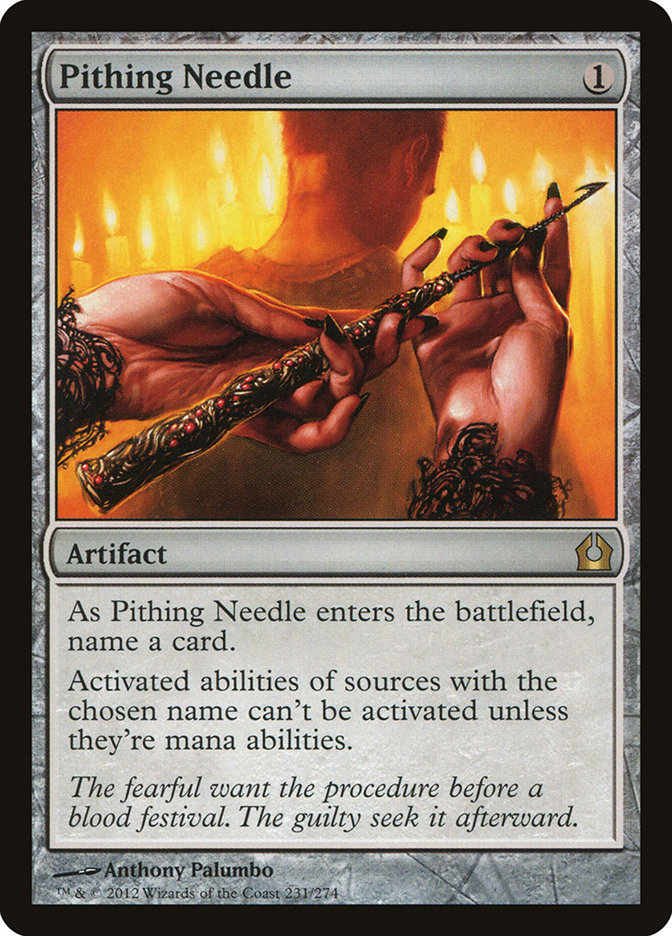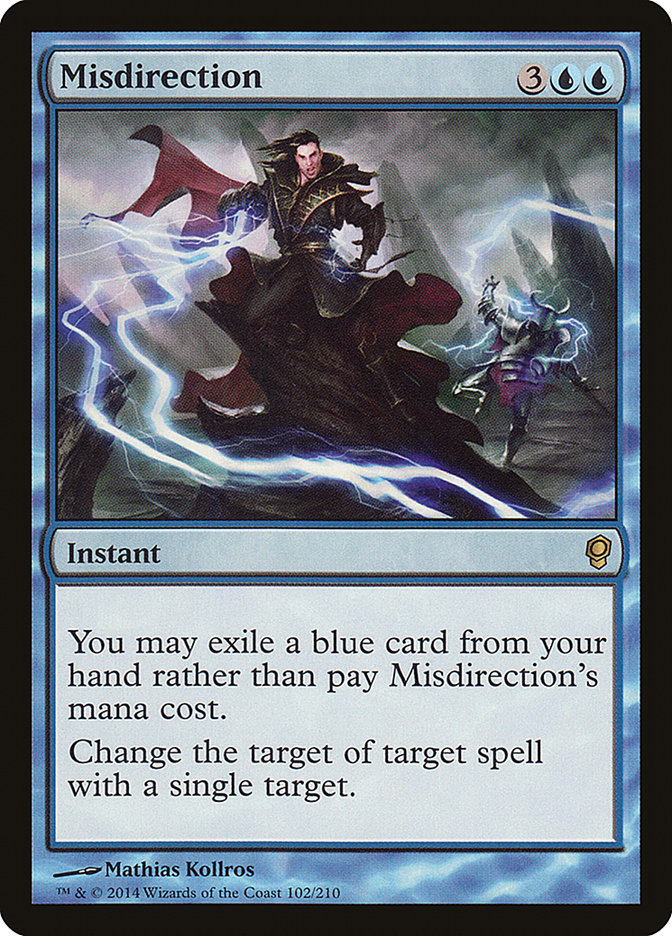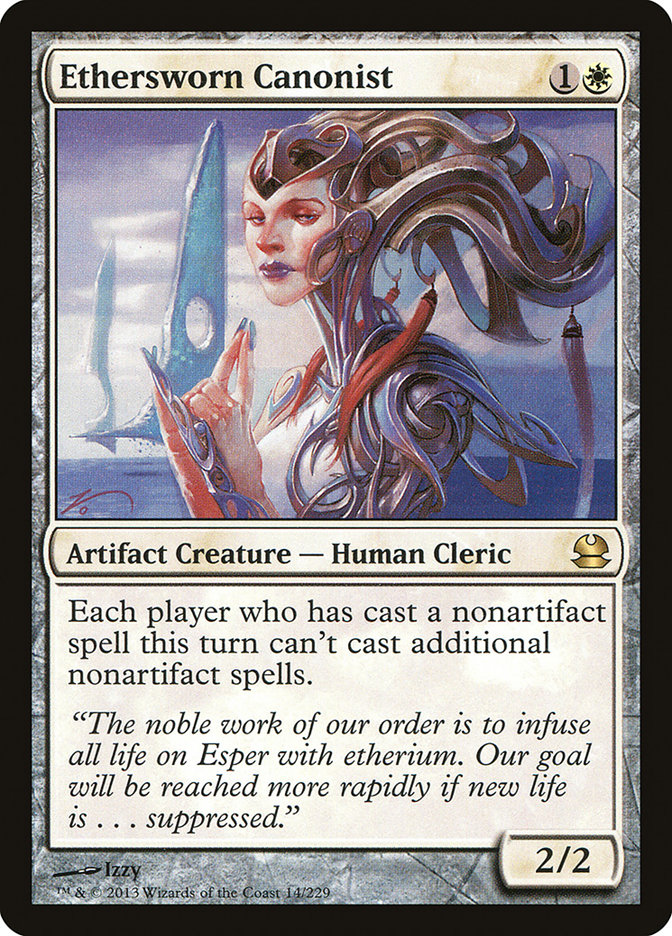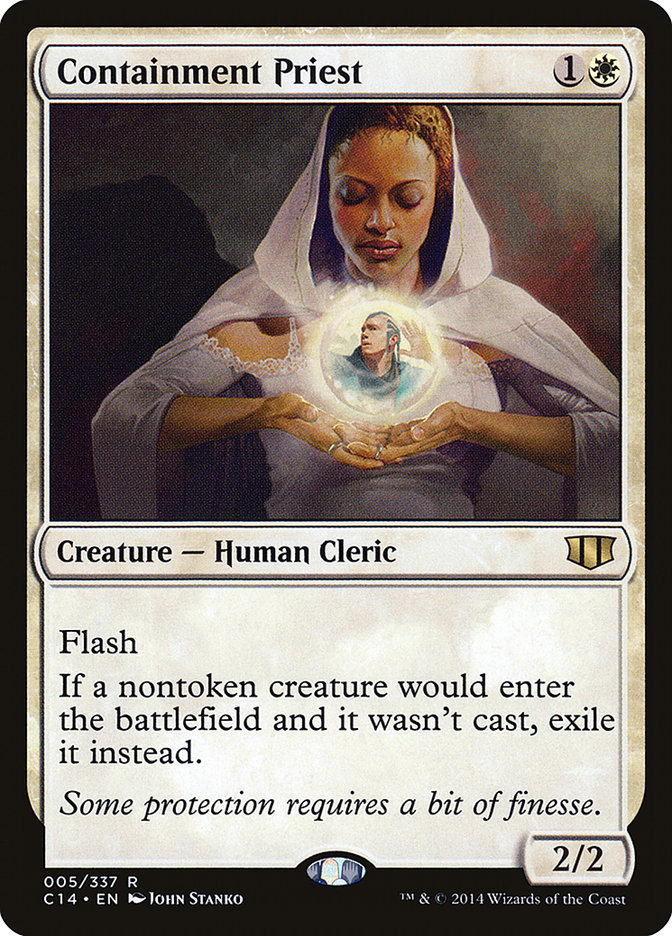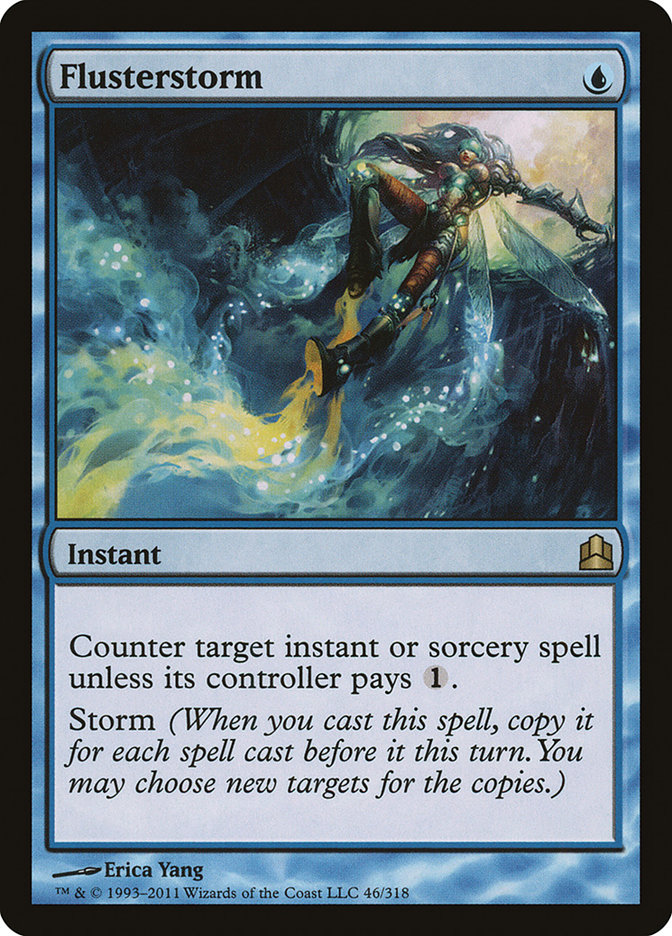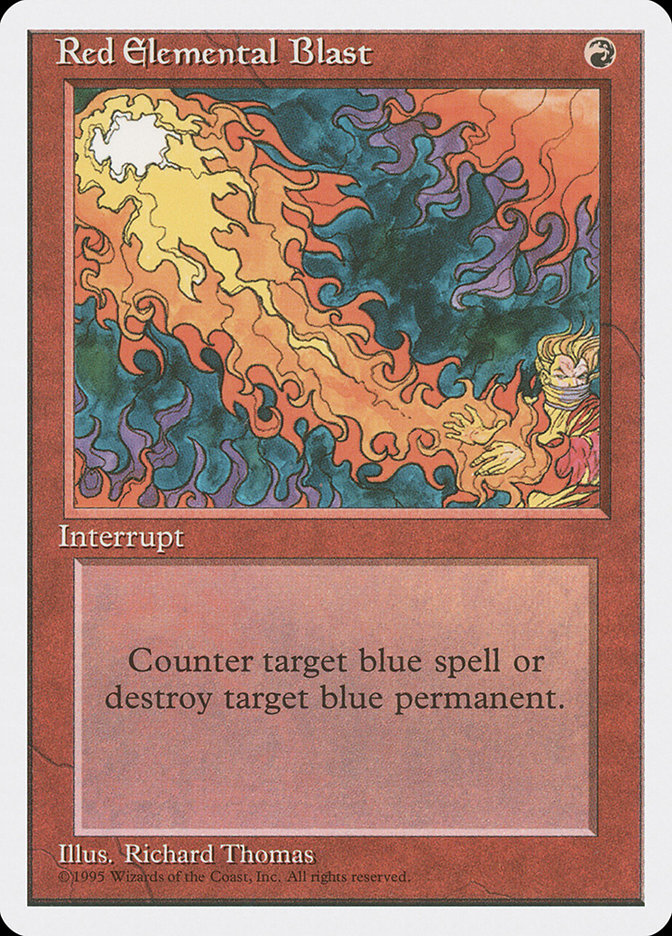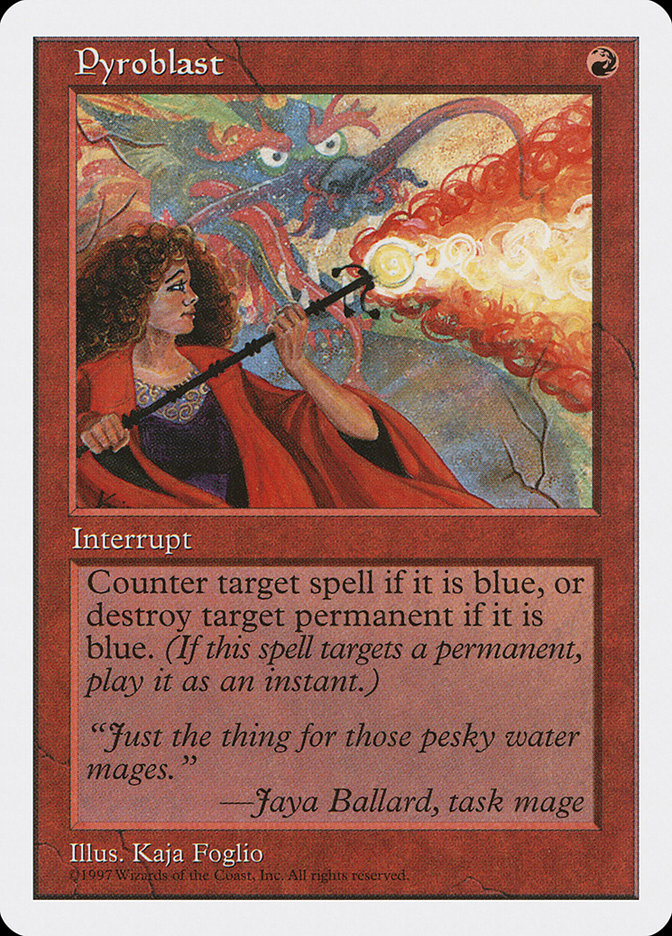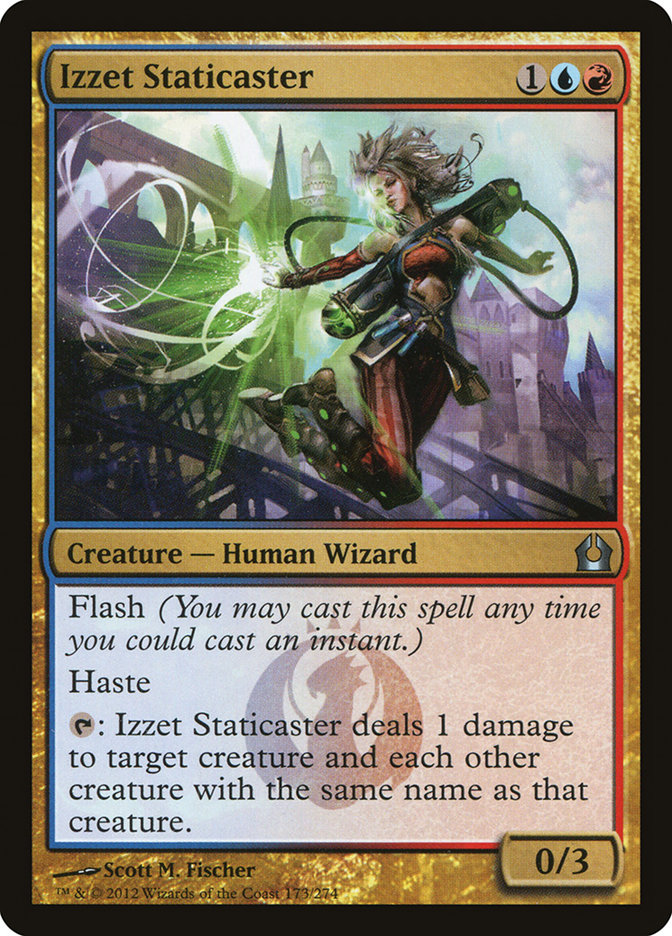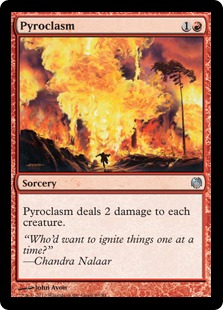70% of what you read below is knowledge that was transferred directly to me by Danny Batterman, who despite not playing a ton of real life Magic due to
judging and school, still knows basically everything about Miracles.
Another 25% is things he is going to read and will say “I could have told you that” about.
The other 5% is my usual charming witty banter.
What is Miracles Trying to Do?
Contrary to popular belief, Miracles is not just some crazy deck-manipulating lock deck that requires super intricate familiarity with card positioning and
what not. Old Next Level Blue Counterbalance decks with Tarmogoyf were, but Miracles isn’t. It plays a lot closer to a Cruel Ultimatum or Sphinx’s
Revelation deck than anything else, just with some Legacy cantrip flair.
You have a huge number of overpowered game-enders. Depending on matchup, it could be Force of Will, Counterbalance, Jace, the Mind Sculptor, Terminus, or
Entreat the Angels. Regardless of which of these are the ones that kill your opponent, you gameplan is the same. Deploy efficient answers if your opponent
casts something that matters, find the “I Win!” button, and press it. Sometimes the “I Win!” button is you having counter backup when you go for your card,
or you having cleared their battlefield before deploying it. Whatever it is, just find it and execute.
Why Miracles?
The obvious reason is that the deck is completely messed up. It is one of the decks that abuses Brainstorm the most in Legacy, gets to play Force of Will,
gets to play one mana Wrath of God, and so much more. This is not fair.
The secondary reason is that I was following a trend. I’ve played a reasonable spread of Legacy decks over the last few years. My last five major events
saw me playing Death and Taxes, Storm, Esper Deathblade, U/R Delver, and now Miracles. Literally regardless of what I played, the Miracles matchup ranged
from unwinnable to very scary. I stole a few on the back of Rishadan Port (dumb) and game losses (even dumber), but at some point the escape clause kicked
in of “Why the hell am I not just playing that deck?” Having played it, past me was dumb. I’ve gone for too long playing other decks when I could just play
a broken control deck.
The real reason is Danny told me to and kept beating me until I did, but I like to pretend to have agency over my decisions sometimes.
What I Played
This is the list I ended up on. While I think I ended up making a lot of great sideboard choices, I kept trying to change the maindeck, then getting
scoreboarded by Danny in games played and going back to the first 60 he sent me.
Creatures (3)
Planeswalkers (3)
Lands (23)
Spells (31)

Zero Ponder was a tested and calculated choice. The card certainly increases your range of keepable hands, but Miracles actually mulligans very well as its
individual card power is high enough to ignore being down cards.
There is actually a cost to having four Ponder in your deck. Being lighter on lands leaves you exposed to Stifle, Wasteland, Rishadan Port, and Thalia,
Guardian of Thraben. Even against other decks, you can choke on mana and put yourself out of position if you have to convert your in-hand Ponder into a
resource.
Miracles is also a deck where you have absurd amounts of card selection and an actual reason to want diverse cards due to needing to spread your costs for
Counterbalance. You want consistency, but you start approaching a window where homogeneity actually hurts you as you don’t have the things you need to win
a game.
Zero Monastery Mentor was a little less tested. I played a few games with the card and didn’t like tapping out for it, but I will admit it is really messed
up. If I were playing this deck moving forward, I would first put more time into figuring out if you want two, three, or zero of this card. Honestly, this
card is the best reason to play Ponder, as you basically need that card to make Mentor work well.
Of course, Entreat the Angels is a known great card. Even beyond the fact that it gives you the old end of turn Top flip kill, the card just beats people
on the natural miracle. I had multiple opponents just get completely shaken when I miracled it early on because they just didn’t expect to be dying that
quickly. Just be sure to do it for enough to actually kill them through removal.
Some lists are cutting down to three Terminus. This card is super messed up and basically why you are playing Miracles. If Terminus is bad, but the rest of
your deck isn’t, you should probably be playing Counterbalance and Sensei’s Divining Top in a different shell.
Vendilion Clique is a great Magic card, in general. It plays very well with the “set up a threat and kill them with it” plan, and sometimes it just is the
threat. At worst it blocks Delver of Secrets.
Snapcaster Mage is trash. I sideboarded it out most of my rounds since you can’t have it against Deathrite Shaman. It also is 100% uncuttable because seven
is the minimum number of two-drops you can play for Counterbalance and nothing else is good. I’m open to suggestions. Danny and I went as deep as to
discuss and dismiss Azorius Charm.
Spell Pierce is basically there to give you more outs to Liliana of the Veil in the earlygame. The exact scenario it helps the most is on the draw against
Deathrite Shaman. I think this interaction came up once or twice the whole event, but having more things to fight with was always nice.
Dust Bowl is not necessary. You need 23 lands if you don’t play Ponder, but the 23rd land can be pretty much anything; the colored mana works on 22. Dust
Bowl kills stupid stuff like Cavern of Souls in the Joe Lossett version of the mirror, Creeping Tar Pit versus Sultai, and Boseiju, Who Shelters All
against Show and Tell decks. It can also lock out Sultai decks in theory, but that only happened once the whole tournament, and even then, only when they
were mana screwed to begin with. The next option I was interested in was a third Volcanic Island so it’s harder for Delver decks to Wasteland all of your
red sources, which can be an issue if you sideboard in more red spells than you have red sources.
Lie #1: Abrupt Decay keeps Miracles in check
Abrupt Decay is good against Miracles players who don’t play as if Abrupt Decay exists. I played nine of my twelve rounds post-byes against the card Abrupt
Decay: two Four-Color Delver, four Sultai Delver, one Shardless Sultai, one Jund, and one Maverick. I went 5-4 against that set of decks, but if you
exclude the times I played against one less common card, I was 5-1. This was me playing the Grand Prix on “hard mode,” and most of the time it really
wasn’t that hard.
Don’t cast Counterbalance into obvious Abrupt Decays, as it’s still good Brainstorm or Force of Will fodder. The Abrupt Decay decks all suck against your
big swingy threats, so just set up to land a stable Jace or Entreat for more than two at instant speed. They often have a bunch of two-for-ones, but often
their +1 is a crappy 1/1 or making you discard when you have an active Top to find or float action on top of your deck. You either have time to maneuver or
they have overextended into Terminus.
After sideboard, suddenly you have too many things for them to Decay (plus Misdirection) to wreck them. Instead of them getting better against your lock,
they are more likely to get kolded by it. Don’t try to fight them on the stack with Red Elemental Blasts. Just beat their midrange elements and you
probably will overpower them going late.
I’m not saying you will win every game, but it sure felt like there were a lot of games where they should be winning, as they were pushing ahead on every
play, and suddenly they were just dead.
Abrupt Decay doesn’t keep Miracles in check, it just makes people feel like they actually played Magic when they lost instead of just getting locked out on
turn 2.
What was the card that was correlated to me losing?
I was solidly 0-3 against Dark Confidant decks.
In testing, the hardest thing to beat was one of Dark Confidant, Stoneforge Mystic, or Young Pyromancer backed by disruption. The one flaw to Miracles is
that it can be slow to get off the ground and is actually light on specific answers if it doesn’t have time to churn through a bunch of cards first. If
Dark Confidant lands on turn 2, you have a very small window to answer it before things get out of hand. Young Pyromancer and Stoneforge Mystic give you a
little more time, but are a bit more Swords to Plowshares proof.
Seriously, Saito’s sideboard plan of four Dark Confidant is a real thing. He sure beat the crap out of me with it.
Aside: Sylvan Library is also very powerful, but four life per card is a lot. Multiple times my opponents landed it and drew an extra card only to find out
I could make two Angel tokens and was the beatdown. Oops.
Sideboarding
Now that we have that out of the way, let’s talk about the sideboard.
Rest in Peace should be obvious, but also remember to sideboard it in versus anyone who has multiple creatures that rely on the graveyard like Tarmogoyf,
Deathrite Shaman, or Nimble Mongoose. I didn’t sideboard it in against Knight of the Reliquary because my opponent tutoring up lands every turn was
probably still good and Rest in Peace wasn’t actually bricking a card.
Pithing Needle is a great catch-all. It stops Liliana of the Veil, Deathrite Shaman, Sneak Attack, Aether Vial, Rishadan Port, Thespian Stage, and so many
more things. It comes in way more than you think. In mirrors it’s even fine, similar to how Phyrexian Revoker was great in Death and Taxes mirrors. Just
name the thing they have and you don’t!
Misdirection is how you get Sultai decks most of the time. Basically anything you use this on is a blowout. Abrupt Decay, Hymn to Tourach, Ancestral
Visions, even just a Thoughtseize that forces them to take one of their own cards now. Between this card and the previous two permanents, you are also now
at a point where you have seven to nine things that trade for Abrupt Decay, and they just have four Abrupt Decays. Something will slip through the cracks,
and they probably will die to it.
Ethersworn Canonist is a pretty obvious hate card for Storm and Elves, but it is also good against the Show and Tell decks. If Canonist is on the
battlefield, you have free reign to counter their threats without getting Spell Pierced back. Meddling Mage was also considered for this slot, but I was
persuaded not to play it because Sneak and Show can handle it via Red Elemental Blast.
Containment Priest is another super obvious hate card. Just remember it turns off Aether Vial too, so sideboard it in against Death and Taxes.
Flusterstorm is just the most efficient interactive spell against combo and Delver. Nothing fancy here.
Red Elemental Blast and Pyroblast literally do what they say on the card: counter blue spells, destroy blue permanents. They aren’t great against Sultai
decks or Delver with Young Pyromancer, but they are strong against Temur Delver and combo. You can live without the third, but I wanted another card for
the mirror match and it was the best thing possible. The mix is so you can’t get Meddling Mage’d off of them, though I did Misdirection an opposing
Pyroblast to a non-blue permanent at this event when a Red Elemental Blast would have had no other legal targets and killed my Jace, the Mind Sculptor.
Izzet Staticaster and Pyroclasm were concessions to Young Pyromancer. After playing I wish I had just played two Pyroclasm because that card is also great
against opponents with Deathrite Shaman and Delver of Secrets in their deck. Or as was the case against my Goblin Stompy opponent, players with Magus of
the Moon and Siege-Gang Commander. Izzet Staticaster is also a bit less reliable against Death and Taxes due to Phyrexian Revoker, and it didn’t kill Scryb
Ranger the one time that mattered. On the flip side, Staticaster can actually kill a Mother of Runes via end of turn ping, untap and ping again. The other
subtle bonus to Pyroclasm is that it is a two-drop to sideboard in against Storm that flips to Counterbalance against Infernal Tutor and handles Xantid
Swarm or Empty the Warrens, though Staticaster does pitch to Force of Will, whereas Pyroclasm doesn’t.
Wear//Tear is good more than you think it is. People have stupid stuff like Sylvan Library or Null Rod you need to kill sometimes, or just random Shardless
Agents you can burn it on if you need to do something with it. Note that Wear//Tear reveals as a one and a two to Counterbalance, but gets cast as a three
when fused against it. Also note that you can’t fuse when you give Wear//Tear Flashback, which I’m sure is something people have done not knowing and had
their opponent not know either many times.
Elspeth… Elspeth is just some awesome Danny tech. I only actually ended up casting it once, but the idea is solid. You want another big finisher against
B/G decks that requires a Maelstrom Pulse, a breaker in the mirror, and just some trump when people try to attack you with stupid creatures. I would like
to try Gideon, Ally of Zendikar in this slot, as you can reasonably sideboard it in against Daze decks, but it’s also very possible that just making a 2/2
each turn is a beatable effect, whereas three Soldiers is not remotely close.
Some sample sideboard plans that span the major archetypes of midrange, tempo, control, and combo:
VS Shardless Sultai
Out (on the draw):
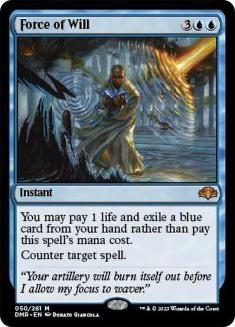

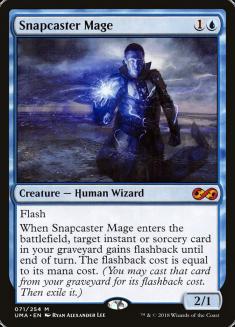
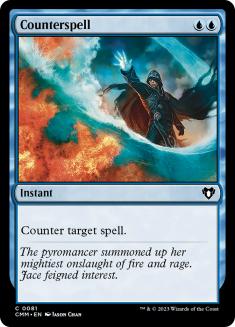


In (on the draw):


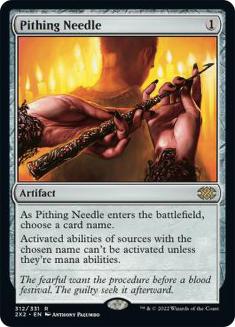
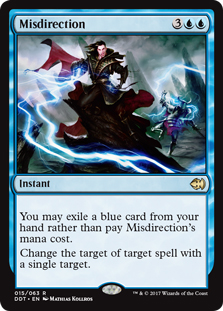
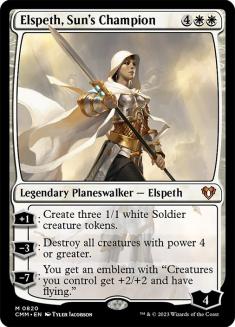

Out (on the play):



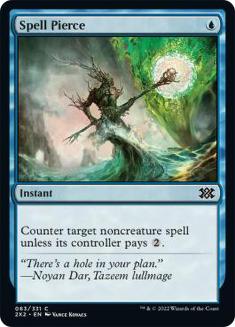


In (on the play):






If I had a second Misdirection, I would sideboard out a Force of Will for it. As mentioned above, you leave in all the Abrupt Decay targets because after
sideboard you just have too many to kill. The Wear//Tear covers Pithing Needle, Null Rod, or Sylvan Library while still being spot removal for Shardless
Agent or Baleful Strix if you need to clear a card. The play/draw counter split is basically setting up needing to counter them curving out Deathrite
Shaman into Liliana of the Veil, which takes Spell Pierce on the draw.
VS Temur Delver
Out:
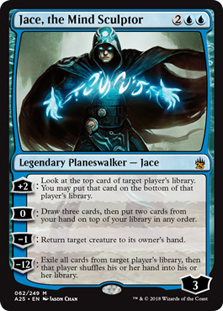





In:
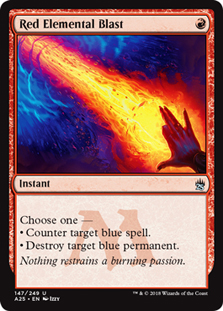

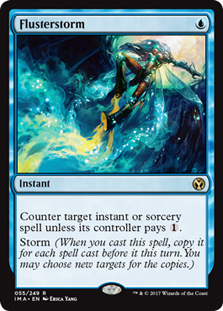



Take out clunky cards and go low to the ground. Council’s Judgment is clunky but handles a Nimble Mongoose. You don’t want multiple Force of Wills, but you
need to win fights sometimes. Flusterstorm is a worse card than Pyroblast but doesn’t open you up to getting Wastelanded.
VS Miracles
Out:
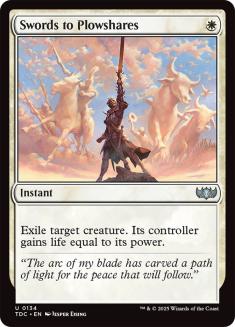



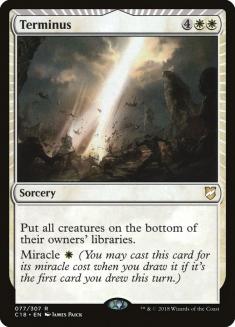


In:


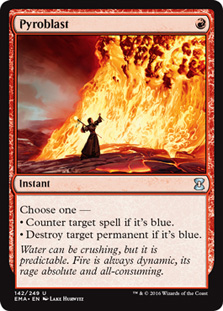




The only interesting decision here is that you need to leave in some number of Terminus to handle Entreat the Angels and Monastery Mentor. The relevant
cards are basically Counterbalance lock and Jace, the Mind Sculptor with Entreat the Angels being one of the few outs to the lock. You are playing to win
the fights over these cards in the best way possible.
VS Sneak and Show
Out:








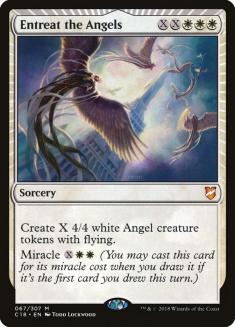


In:





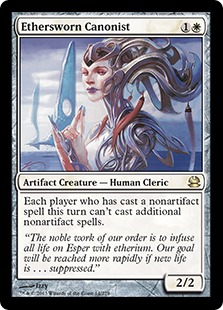
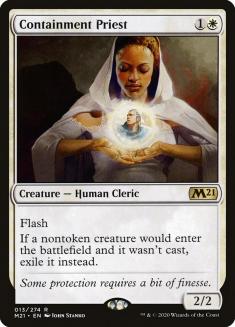




Don’t lose to Blood Moon. Removal is obviously bad, and you can shave on win conditions, as 2/2s can attack. The big thing here is that you can shave a
land in the fast non-Wasteland matchups, and it is usually Plains. In this case, it is Tundra due to Blood Moon.
Lie #2 – You will get draws with Miracles
Besides crushing everyone, my goal for this event was to stress test a personal record I have: zero unintentional draws at Pro Tours or Grand Prix.
I played one match that took more than 40 minutes this entire event. It was a three-game match against Jund where games 1 and 2 ended with my library being
smaller than my graveyard.
Playing Miracles in 50-minute rounds is very doable. I think that if I keep playing the deck at events I will eventually get a draw or two, but my average
would be well below one per event.
Set the pace early. As soon as it was obvious I was on Miracles, I had my speech ready. “Neither of us want to draw. I’m going to play as quickly as
possible, I would appreciate you doing the same.” If they start hemming and hawing for too long, I gave them one verbal bump before proceeding to calling a
judge the next time it happened.
You can’t afford to screw around when shuffling. If you are fetching and passing, let them know so the game can progress while you are shuffling. Don’t
pile shuffle, as it’s just a giant time sink and tell them the same thing. I’m not going to count your deck, I’m just worried about finishing the match. If
my sideboard counts to fifteen, I didn’t mess it up.
Having sideboard plans in place matters a ton. You can make a lot of small decisions with this deck and the stack of singletons it plays, and it’s easy to
get lost in bear-on-a-bicycle land if you have to derive it from scratch. Lay it out versus the stock lists and deviate as needed. Bring that slip of paper
with you in the deck box.
You will likely miss some plays doing this. Don’t sweat it, you are making the value play. A draw is -2 match points, which isn’t far from a loss. Even at
a 50% game win rate and every punt directly costing a game, you are only losing a quarter match to each punt or -0.75 match points. Then you have to factor
that not every punt matters, and you realize you are basically allowed a full Jaime Wakefield punt before you are losing the same match point value.
Worst case scenario: Entreat the Angels and Monastery Mentor kill in two swings most of the time. You can easily just gun it and kill them if you have to.
Sensei’s Divining Top Mechanics
Terminology I’ll use here:
– A spin is looking at your top three cards.
– A flip is tapping Sensei’s Divining Top to draw a card and put it back on top of your deck.
If you are playing against a deck with instant speed ways to kill Sensei’s Divining Top and are fetching to see a new three, spin the top and respond with
a fetch if possible. This way if they Abrupt Decay your Top in response to the fetch, the stack is top to bottom: Decay, fetch, spin, and you still get to
rearrange your top three cards after the shuffle effect resolves instead of just shuffling away the Top and being stuck with normal draw steps like some
kind of peasant.
There are times where I wanted to flip Top but recast it next turn, such as Terminusing on their end step and using all my mana next turn to play Jace with
Counterspell up. You can spin Top and respond with a flip here so that you can push the Top you put back further down into your deck. A common example of
this: The top of my library in order is Vendilion Clique, Entreat the Angels, and a random card. I spin Top and respond with a flip. I draw Vendilion
Clique, cast it to strip their answer, then the spin resolves and I get to push Entreat to the front of the queue and slam it before they get another draw
step to find a counter. Or if they have multiple answers, I just leave Top on top and go back to filtering for more backup.
Places I Failed
I’m very sure I played too conservatively against Stifle and Wasteland at times, which likely cost me some margin on Sensei’s Divining Top and Brainstorm,
as my fetchlands had to be used at awkward times.
Similarly I had a lot of games where I half played around Daze and half didn’t. There are times you have to realize you can no longer play as if they have
it, but again I was often too conservative. Blame Storm for almost always being able to build bigger than soft counters.
I was too aggressive with Dust Bowl at times. In big mana spots, you are better than them most of the time, so unless you can cut them on a color, trading
lands probably doesn’t favor the control deck.
It’s very possible I was keeping some hands and playing some games where I exposed myself to losing to threats I didn’t have to lose to. The one I’m
thinking of is Liliana of the Veil, mostly because I kept thinking about the card on turn 3 and thinking “If they have it, I’m dead.” And then dying
sometimes. You should probably ask someone better than me with this deck about this one, as I don’t have the play experience here to extrapolate what I’m
supposed to do on the spot, let alone generate good heuristics for it.
Of course, good heuristics is really all you want with this deck. Sometimes you have the time to go crazy deep on your lines, but for the most part, you
want to play quick to certain rules. If nothing else, this is where I succeeded. Miracles is secretly a downhill deck. Play it that way and you will gain
many match points other Miracles players throw away.

